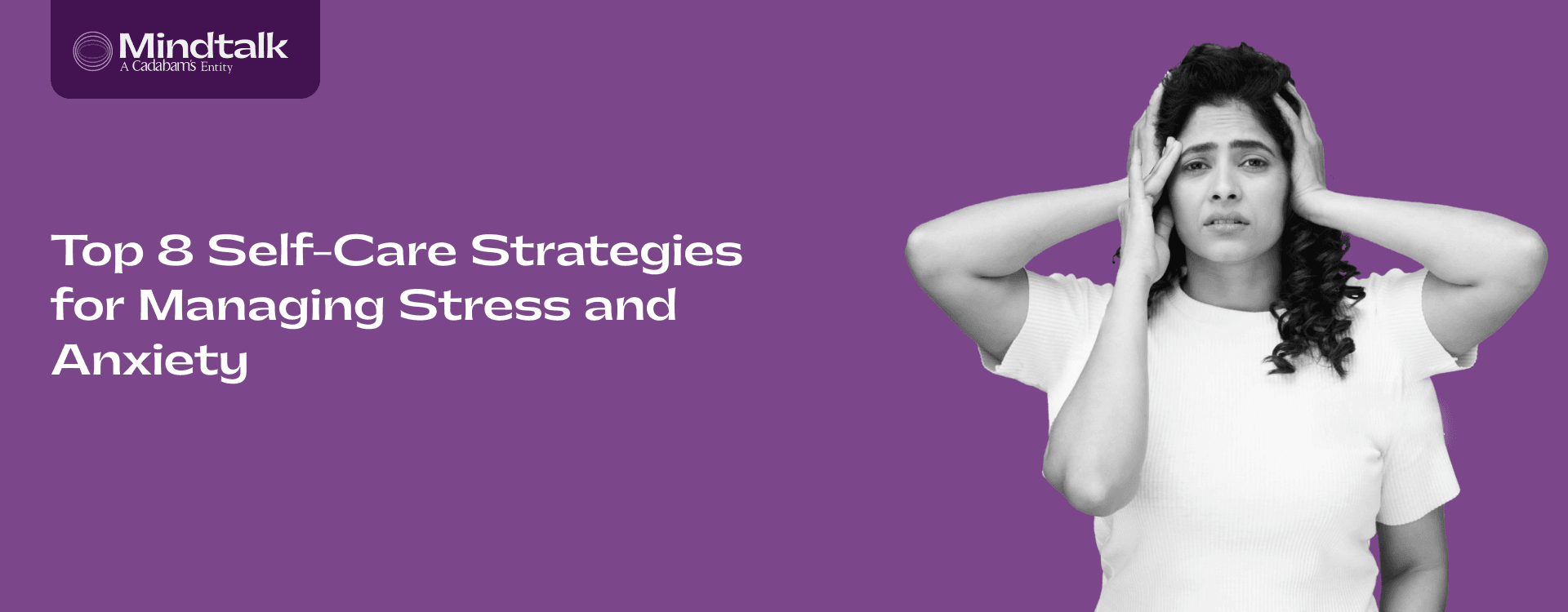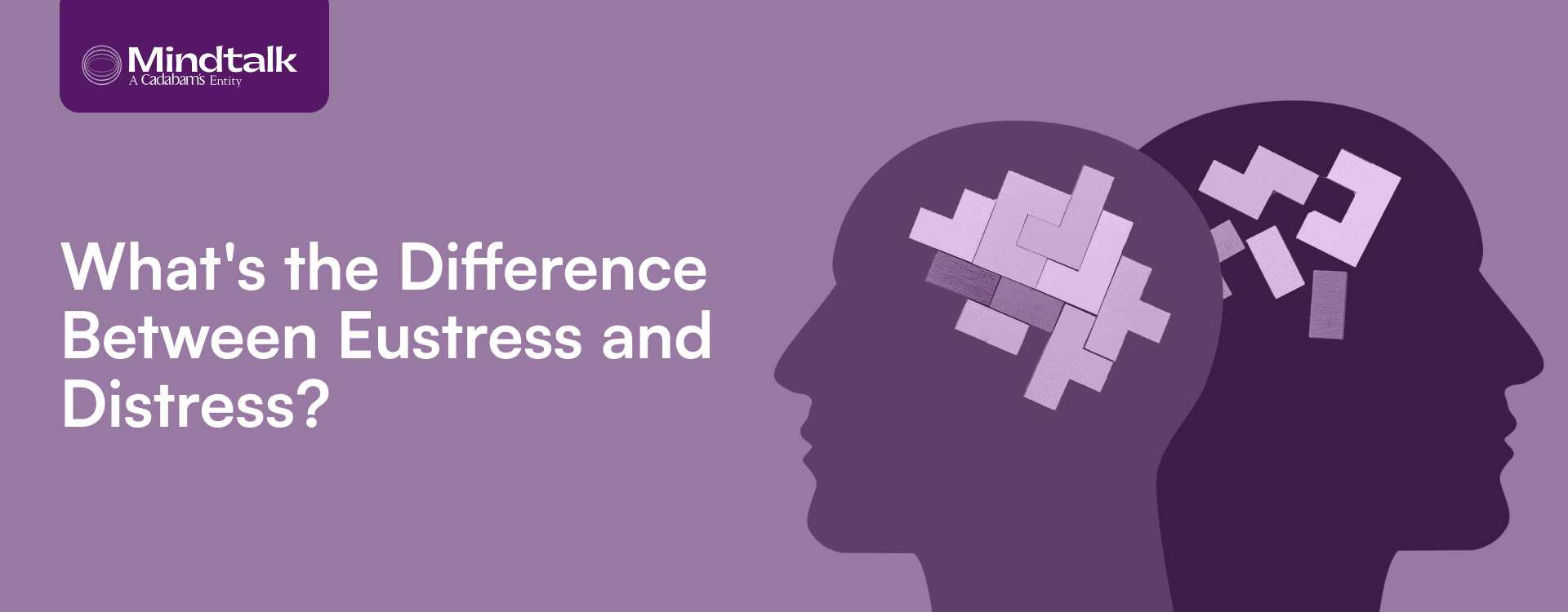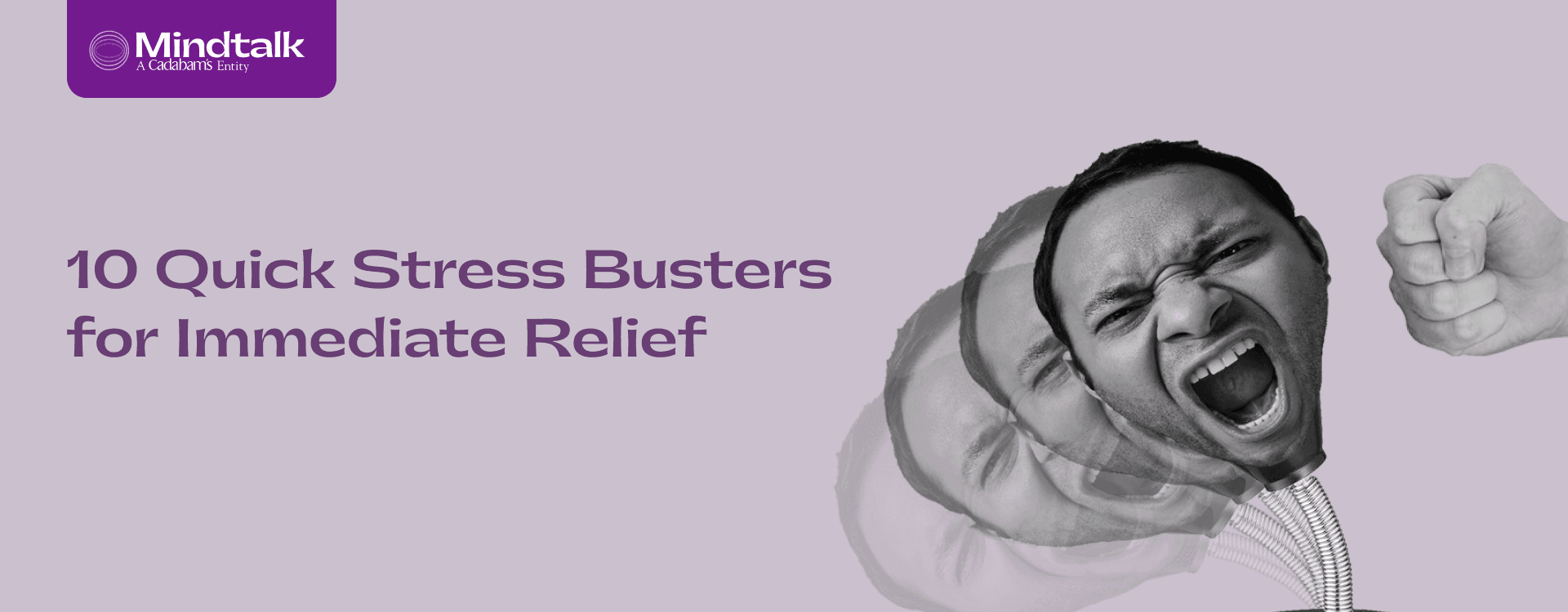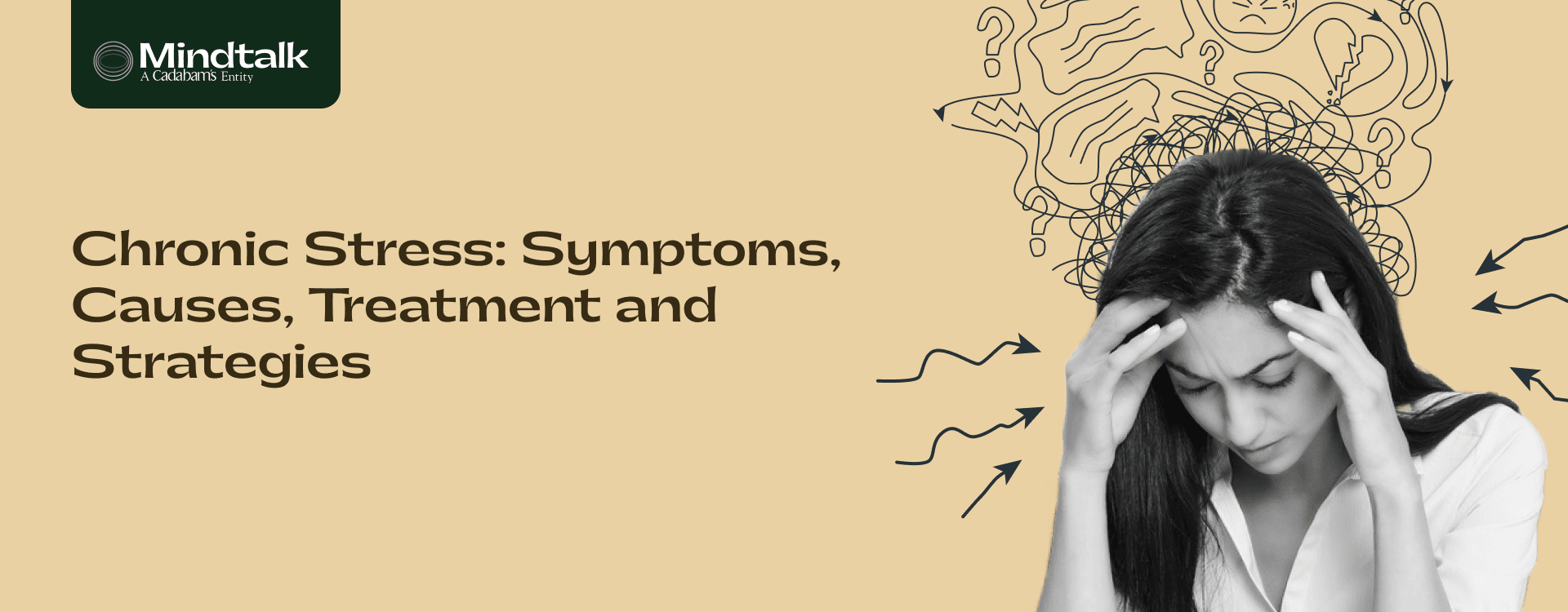Burnout Syndrome: How to Recover & Regain Control
Feeling drained, overwhelmed, and disconnected? You might be experiencing burnout syndrome. This modern-day condition can rob you of your energy, motivation, and joy but with the right tools, you can recover and reclaim your vitality.
What is Burnout Syndrome?
Burnout syndrome is a state of long-term exhaustion caused by unrelenting stress—especially from work or caregiving roles.
It affects energy, motivation, and emotional stability, and if left unchecked, can lead to serious physical and mental health consequences.
How it differs from everyday fatigue
While fatigue can result from lack of sleep or overexertion, burnout is deeper and longer-lasting.
It’s characterised by emotional depletion, disengagement, and a sense of helplessness. Burnout affects your ability to function, while fatigue is temporary and recoverable.
The Impact of Burnout – Key Statistics
Burnout is an escalating issue worldwide, with the World Health Organization (WHO) noting its increasing prevalence in high-stress professions. Globally, the burden of burnout has caused a significant decline in workplace productivity, affecting millions of individuals.
In India, research shows that over 62% of Indian employees experience burnout. As work pressures rise, the symptoms of burnout are becoming more pronounced, with many employees reporting emotional exhaustion and disengagement from their roles.
Burnout vs. Stress – Know the Difference
Stress is often short-term and tied to specific events. Burnout is chronic, building over time and leading to complete emotional and physical exhaustion.
- Cause: Stress is triggered by immediate external pressures. Burnout stems from chronic, unmanaged stress and overwork.
- Emotions: Stress causes anxiety and urgency. Burnout leads to numbness, detachment, and hopelessness.
- Energy Levels: Stress drains energy temporarily. Burnout causes long-term exhaustion, regardless of rest.
- Performance: Stress may enhance short-term performance. Burnout reduces focus, motivation, and output.
- Physical Symptoms: Stress triggers headaches, tension, rapid heartbeat. Burnout adds fatigue, sleep issues, and frequent illness.
- Mental Impact: Stress fuels worry; burnout leads to withdrawal and emotional shutdown.
- Reversibility: Stress eases with rest. Burnout needs sustained recovery.
- Associated Disorders: Both link to anxiety, depression, and PTSD.
Types of Burnout
Burnout can take many forms depending on the source of pressure like professional demands, caregiving responsibilities, or emotional overload.
Identifying the type helps in recognising triggers and choosing the right recovery strategies.
Occupational Burnout
Often seen in demanding workplaces, this type stems from long hours, unrealistic deadlines, and toxic management.
Employees feel undervalued, overwhelmed, and emotionally drained eventually disengaging from their roles despite once feeling motivated or committed to their work.
Caregiver Burnout
This form of burnout affects those in constant caregiving roles such as parents, partners, or professionals.
Emotional load builds over time, leading to role fatigue, irritability, and a sense of being overwhelmed or emotionally spent, even when caring for someone you love deeply.
Emotional Burnout
Emotional burnout arises from prolonged inner strain managing intense feelings without relief. It’s common in people who internalise stress or constantly support others emotionally.
Over time, it leads to detachment, numbness, and a reduced ability to process or express emotions.
Common Symptoms and Signs of Burnout
Burnout shows up in more than just fatigue. It can affect your emotions, body, and behaviour often building quietly over time until it begins to disrupt daily functioning and overall well-being.
Emotional signs of burnout:
Burnout often begins with emotional withdrawal. You may feel detached from your work, relationships, or responsibilities.
Cynicism replaces compassion, and once-meaningful tasks feel pointless. Over time, this emotional numbness can impact your mood, motivation, and ability to connect with others.
Physical burnout symptoms:
Chronic fatigue is a hallmark of burnout; it lingers even after rest. You may also experience body aches, tension, or unexplained pain.
Sleep becomes difficult, with insomnia or restless nights adding to the exhaustion and physical depletion.
Behavioural burnout signs:
Burnout often leads to noticeable changes in behaviour. Tasks take longer, focus slips, and performance drops even when the workload is the same.
Procrastination increases, not from laziness, but from emotional and mental exhaustion.
Causes of Burnout Syndrome
Burnout doesn’t happen overnight, it builds over time through constant pressure, lack of rest, and unmet needs. Understanding the root causes is key to preventing and addressing burnout effectively.
Work Related Burnout
Unrealistic deadlines and constant time pressure can push employees into chronic stress.
When combined with poor leadership like lack of support, unclear expectations, or micromanagement, the workplace becomes a major source of emotional and mental exhaustion over time.
Lifestyle causes of burnout
Skipping sleep and staying glued to screens disrupt the body’s natural recovery process.
Late-night scrolling, constant notifications, and poor rest habits slowly wear down your mental resilience making it harder to cope with everyday stressors and emotional demands.
Personality traits can contribute to burnout
Perfectionists and high-achievers often push themselves beyond healthy limits.
The constant drive to excel, meet impossible standards, or avoid failure can lead to self-imposed pressure making them more vulnerable to chronic stress, emotional exhaustion, and eventual burnout.
Risk Factors for Burnout
There are certain patterns increase your risk of burnout. Working long hours without breaks, struggling to set boundaries, or constantly staying “on” blurs the line between effort and exhaustion.
A history of anxiety, depression, or trauma can also heighten emotional vulnerability—making it harder to bounce back from chronic stress.
Stages of Burnout
Burnout unfolds gradually, moving through distinct stages. Recognising where you are in this cycle can help you intervene earlier, seek support, and begin to reverse its emotional and physical impact.
Stage 1: Honeymoon Phase
This stage often begins with excitement and high energy especially in a new job or role. You feel motivated, driven, and eager to prove yourself.
But without boundaries or balance, this momentum can set the stage for chronic stress and unrealistic expectations over time.
Stage 2: Onset of Stress
You begin to feel the strain. Fatigue sets in, focus dips, and pressure starts to build.
You may ignore early warning signs like irritability, headaches, or trouble sleeping—believing it’s just a busy phase. But the body is already signalling that recovery is needed.
Stage 3: Chronic Stress
Stress becomes constant and harder to ignore. You feel emotionally drained, overwhelmed, and increasingly cynical. Physical symptoms like insomnia or tension headaches may worsen.
Motivation drops, and tasks that once felt manageable now seem exhausting. This stage marks the shift from manageable stress to sustained emotional depletion.
Stage 4: Burnout
At this stage, emotional exhaustion peaks. You may feel detached from work, relationships, or even yourself. Motivation is lost, and a sense of helplessness takes over.
Daily tasks become overwhelming, and recovery feels out of reach without intentional rest, support, and lifestyle changes.
Stage 5: Habitual Burnout
Burnout becomes the default state chronic and deeply embedded. Fatigue, detachment, and low mood persist daily, with little relief even during downtime.
It may lead to depression, withdrawal, or health issues. Without intervention, recovery becomes harder and requires professional support, routine changes, and sustained self-care.
Effects of Untreated Burnout
- Physical health decline: Burnout can cause chronic fatigue, frequent headaches, digestive issues, and lowered immunity making the body more prone to illness.
- Risk of depression and anxiety: Prolonged emotional exhaustion increases the risk of clinical depression and anxiety disorders.
- Relationship and job performance issues: Burnout leads to withdrawal, strained relationships, reduced productivity, and low morale at work.
When to See a Doctor About Burnout
If you identify with three or more of these signs, it may be time to seek professional help. Here are a few signs that you may need to see a doctor.
- Constant exhaustion, even after rest
- Work feels meaningless or overwhelming
- Mood swings or emotional numbness
- Trouble focusing or making decisions
- Physical issues like headaches or insomnia
- Withdrawing from social or work life
- Persistent self-doubt or hopelessness
- Self-help methods no longer work
- Suicidal thoughts or emotional shutdown
Treatment Options for Burnout
Addressing burnout requires more than rest. Effective treatment includes therapy, lifestyle changes, and workplace adjustments tailored to your needs each playing a role in restoring mental, emotional, and physical balance.
Therapy and Counselling Options
Cognitive Behavioural Therapy (CBT) helps reframe negative thought patterns linked to burnout and improve coping skills.
Mindfulness-Based Stress Reduction (MBSR) combines meditation and breathwork to reduce emotional reactivity.
Both approaches are evidence-based and widely used to manage burnout, restore balance, and build long-term emotional resilience.
Workplace Adjustments and Lifestyle Changes
Recovery starts with setting firm boundaries like saying no to extra tasks and disconnecting after work hours. Rest isn’t optional; schedule breaks and prioritise sleep.
Redesign your routine to include balance: focus blocks, movement, meals, and downtime. Communicate your needs with supervisors if possible.
Small lifestyle shifts such as reduced screen time or regular outdoor walks can help rebuild energy and emotional stability over time.
How to Overcome Burnout: Practical Coping Strategies
These small steps, done consistently, support long-term recovery from burnout. Steps like:
- Reconnect with hobbies you enjoy—creativity and play restore emotional energy
- Take regular, restorative breaks throughout your day
- Practise grounding techniques like deep breathing or mindfulness
- Journal to release stress and identify emotional patterns
- Reach out to a therapist or join a support group to process and heal
Preventing Burnout: Tips for Maintaining Well-being
Set work-life boundaries before stress builds—don’t wait until you're overwhelmed
- Create a balanced weekly routine with time for rest, focus, and connection
- Use time-blocking to manage energy and avoid task overload
- Limit screen time, especially in the evenings to improve sleep and focus
- Build in moments of silence, nature, or digital detox every week
- Check in with yourself regularly through a weekly mental and emotional audit
Regain Control Over Burnout Syndrome with Mindtalk's Expert Guidance
Burnout doesn’t have to define your life. At Mindtalk, we offer expert-led therapy tailored specifically to burnout recovery.
Our professionals help you address root causes with personalised care so you don’t just cope, you heal. Through structured support, you can rebuild your energy, regain focus, and restore emotional balance.
Choose flexible options that work for you, including both in-person and online sessions. Let your recovery begin with the right guidance because your well-being deserves professional care.
Meet Our Stress Management Professionals
No therapists matched your criteria.



